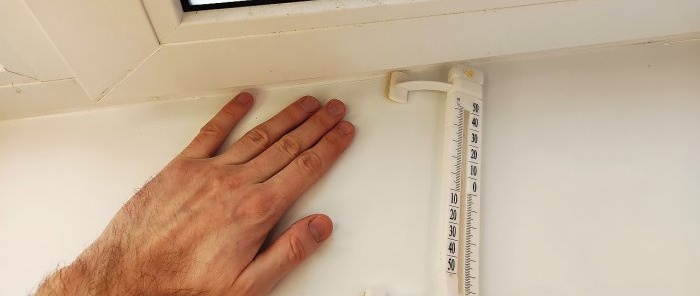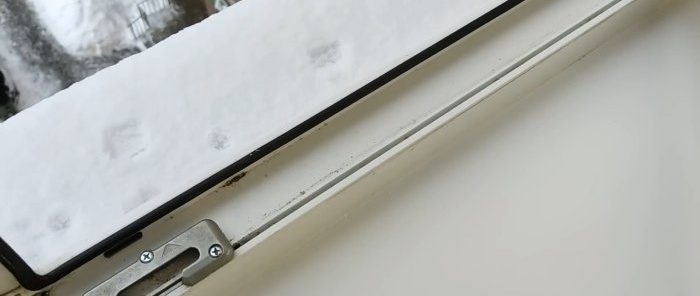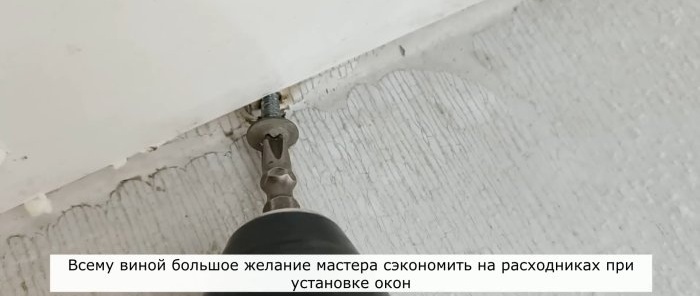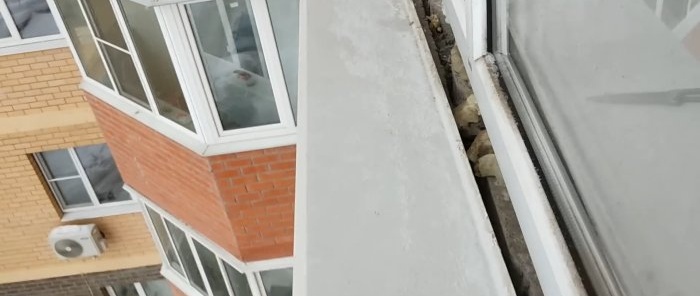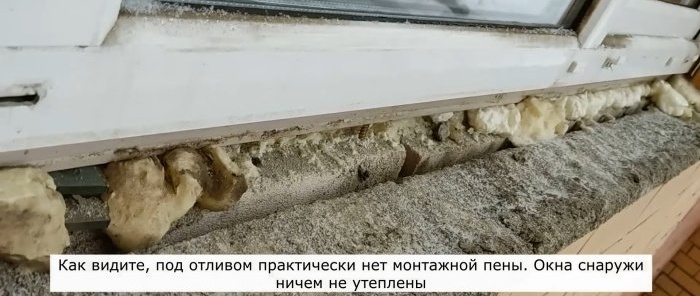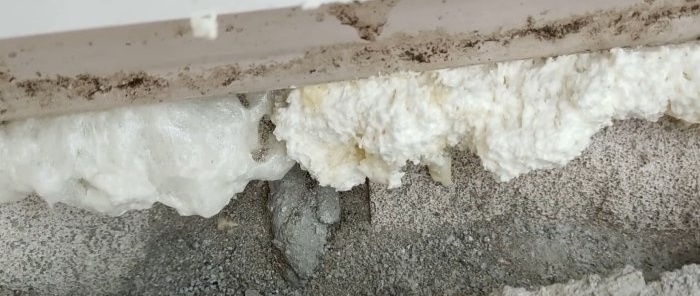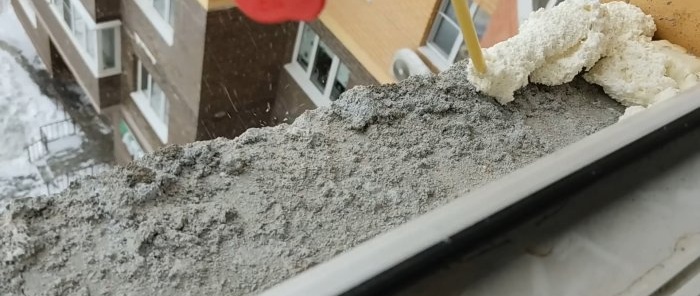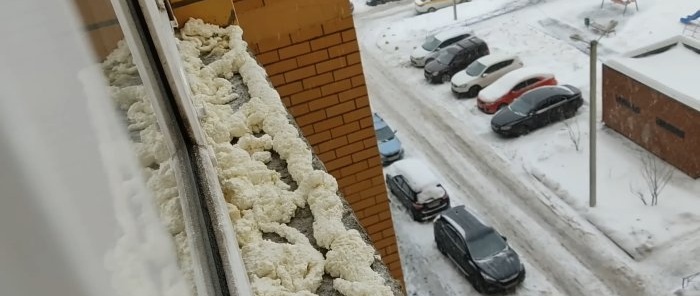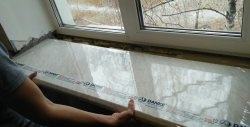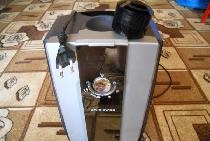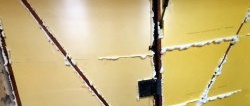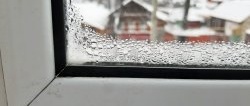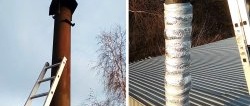If the thermometer shows the temperature in the room under the window sill is noticeably lower than in the depths of the room, and the wall underneath is cold to the touch, then the outside of the window opening is poorly insulated and there are gaps at the joints through which cold street air enters the room. This is especially noticeable when the frosty winter wind blows in the direction of the window opening.
How to insulate a window sill
First of all, we unscrew the self-tapping screws or screws and completely dismantle the external window sill. As one would expect, the mounting foam is practically not visible under the ebb, except for a narrow strip along the center line, intended more for fixing and fastening the ebb, and not for insulation purposes.
It turns out that from the outside, the bottom of the window opening is not insulated in any way, that is, the cold outside air in winter and the warm air in the living room are not separated by insulation. Most often, polyurethane foam plays this role.
Therefore, there are no special barriers for cold air to freely penetrate into the apartment through unclosed cracks at the joints.You can feel that this is exactly the case by placing your palm on the wall under the window, which will be very cold. The same thing can be recorded with a thermometer by placing it for some time under the windowsill inside the room.
Using a sharp knife, cut the old mounting foam from the bottom and remove it. We go over the surface, using alternately a stiff brush and sandpaper. To remove small debris that has accumulated and formed after a hard brush, use a broom and a household vacuum cleaner. Wash the exterior window trim in the shower to remove small particles and dust accumulated over the years.
We foam the entire surface under the external tide and the cracks between the walls with winter foam, which must withstand no less than ten-degree frosts. We lay the foam especially carefully and thickly around the perimeter of the surface.
In order for the ebb to have greater adhesion (adhesion) to the mounting foam, we moisten the ebb from the bottom side and the wall surface. Now all we have to do is install the outer ebb in its old place and securely fasten it with screws or self-tapping screws so that it does not get torn off by strong winds.
After such a complete and thorough renovation, the temperature near the window opening from the inside will level out and become the same as in the depths of the room, and no penetration of cold air from outside will be felt.
